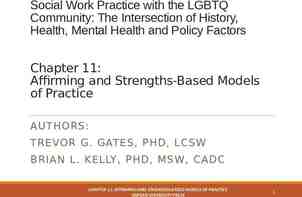Sigma and Pi bonding and Molecular Orbital Theory
23 Slides3.42 MB
Sigma and Pi bonding and Molecular Orbital Theory
Valence Bond Theory Hybridization is a major player in this approach to bonding. There are two ways orbitals can overlap to form bonds between atoms.
Sigma ( ) Bonds Sigma bonds are characterized by – Head-to-head overlap. – Cylindrical symmetry of electron density about the internuclear axis.
Pi ( ) Bonds Pi bonds are characterized by – Side-to-side overlap. – Electron density above and below the internuclear axis.
Single Bonds Single bonds are always bonds, because overlap is greater, resulting in a stronger bond and more energy lowering.
Multiple Bonds In a multiple bond one of the bonds is a bond and the rest are bonds.
Multiple Bonds In a molecule like formaldehyde (shown at left) an sp2 orbital on carbon overlaps in fashion with the corresponding orbital on the oxygen. The unhybridized p orbitals overlap in fashion.
Multiple Bonds In triple bonds, as in acetylene, two sp orbitals form a bond between the carbons, and two pairs of p orbitals overlap in fashion to form the two bonds.
Delocalized Electrons: Resonance When writing Lewis structures for species like the nitrate ion, we draw resonance structures to more accurately reflect the structure of the molecule or ion.
Delocalized Electrons: Resonance In reality, each of the four atoms in the nitrate ion has a p orbital. The p orbitals on all three oxygens overlap with the p orbital on the central nitrogen.
Delocalized Electrons: Resonance This means the electrons are not localized between the nitrogen and one of the oxygens, but rather are delocalized throughout the ion.
Resonance The organic molecule benzene has six bonds and a p orbital on each carbon atom.
Resonance In reality the electrons in benzene are not localized, but delocalized. The even distribution of the electrons in benzene makes the molecule unusually stable.
Molecular Orbital (MO) Theory Though valence bond theory effectively conveys most observed properties of ions and molecules, there are some concepts better represented by molecular orbitals.
Molecular Orbital (MO) Theory In MO theory, we invoke the wave nature of electrons. If waves interact constructively, the resulting orbital is lower in energy: a bonding molecular orbital.
Molecular Orbital (MO) Theory If waves interact destructively, the resulting orbital is higher in energy: an antibonding molecular orbital.
MO Theory In H2 the two electrons go into the bonding molecular orbital. The bond order is one half the difference between the number of bonding and antibonding electrons.
MO Theory For hydrogen, with two electrons in the bonding MO and none in the antibonding MO, the bond order is 1 (2 - 0) 1 2
MO Theory In the case of He2, the bond order would be 1 (2 - 2) 0 2 Therefore, He2 does not exist.
MO Theory For atoms with both s and p orbitals, there are two types of interactions: – The s and the p orbitals that face each other overlap in fashion. – The other two sets of p orbitals overlap in fashion.
MO Theory The resulting MO diagram looks like this. There are both and bonding molecular orbitals and * and * antibonding molecular orbitals.
MO Theory The smaller p-block elements in the second period have a sizeable interaction between the s and p orbitals. This flips the order of the and molecular orbitals in these elements.
Second-Row MO Diagrams




























